Dec 12, 2018MSU studies Lorsban alternatives for cabbage maggot control
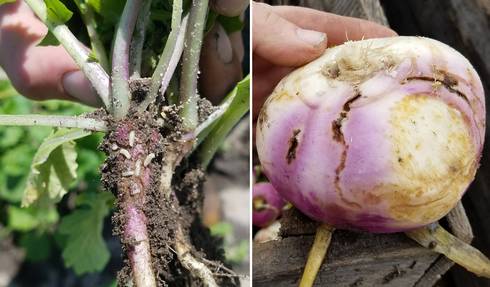
Cabbage maggot is a difficult-to-control pest of brassica root crops that has historically been controlled with at-plant chlorpyrifos (tradename Lorsban) applications. Cabbage maggot flies, which look like houseflies, lay eggs in the soil around the base of radish, rutabaga and turnip plants (Fig. 1). The eggs hatch into tiny maggots that tunnel in the roots, making them unmarketable.
We tested different combinations of at- and post-plant insecticides for cabbage maggot control in 2018 (Table 1). The trial was in a field of turnips planted in a sandy-loam soil on April 30 in Hudsonville, Michigan.
| Table 1. Insecticides tested for control of cabbage maggot in turnips. | ||||
|---|---|---|---|---|
| Insecticide (formulation) | Active ingredient | Insecticide class | Labelled? | Rate |
| Chlorpyrifos 15G (granular) | chlorpyrifos | Organophosphate | Yes | Grower-standard |
| Sepresto (seed treatment) | clothianidin + imidacloprid | Neonicotinoid | No | 0.1 mg active ingredient per seed |
| Capture LFR (liquid) | bifenthrin | Pyrethroid | No | 8.5 fluid ounces per acre |
| Verimark (liquid) | Cyantraniliprole | Diamide | Yes | 13.5 fluid ounces per acre |
| Mustang Maxx (liquid) | zeta-cypermethrin | Pyrethroid | Yes | 4.0 fluid ounces per acre |
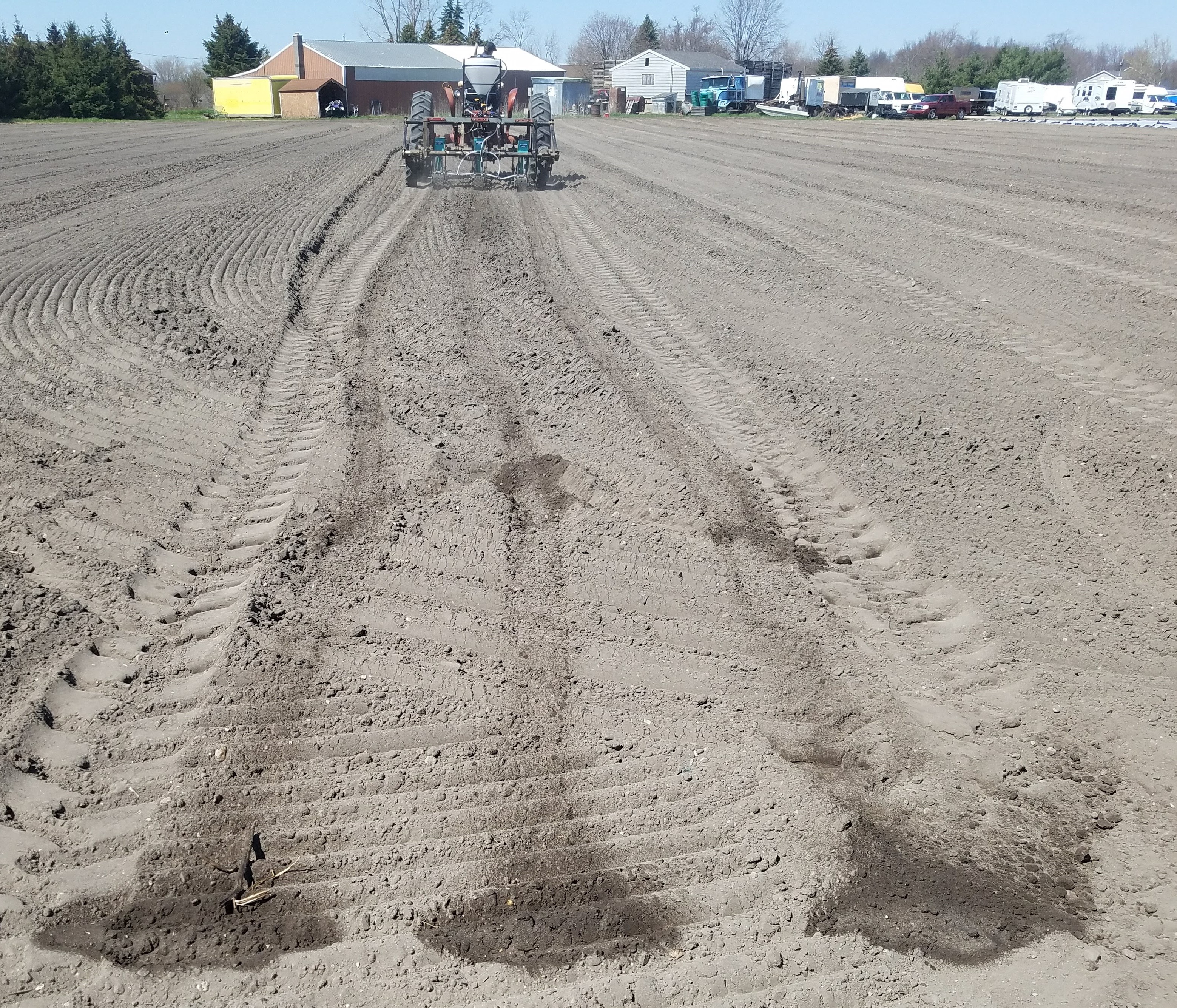
Planting-time products
To test planting-time insecticides, our cooperator planted 20, 180-foot long planter passes of turnips. Turnips were protected with nothing (at-plant controls), in-furrow applications of Chlopyrifos 15G, Verimark or Capture LFR (Fig. 2), or the Sepresto seed treatment (applied by the Cornell University seed technology lab).
Forty-three days after planting, we rated the percentage of turnips with maggot tunneling in each plot (view the results of statistical analyses). The grower standard chlorpyrifos was the best performing at-plant treatment, reducing damage by 70 percent compared to controls (Fig. 3). Sepresto reduced damage by 54 percent, and may warrant further investigation. Growers are interested in Capture as a Lorsban alternative because it has been used in other crops to protect against seedcorn maggot, a relative of cabbage maggot. Unfortunately, in this trial it was not effective for cabbage maggot. Verimark did not provide control in this trial, but see below for more information.
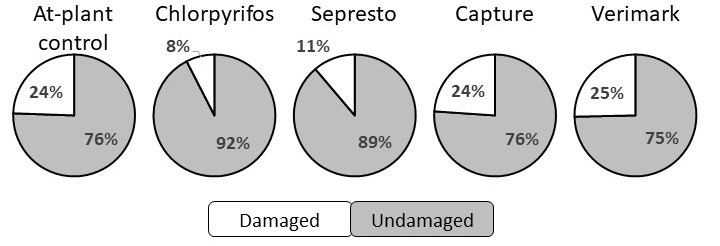
Post-plant applications
Based on past experience, we knew cabbage flies don’t start their peak of egglaying until at least a few weeks after the spring sowing of turnips (Fig. 4). We wanted to see if a delayed application targeting this time period could be helpful for control. To do this, we timed applications using a cabbage maggot degree-day model available on Michigan State University Enviroweather.
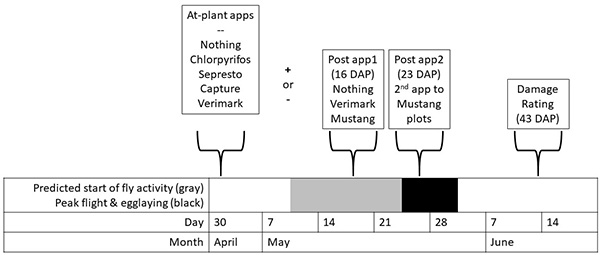
Post-plant applications were tested by dividing each 180-foot long planter-pass into three, 60-foot sections treated with either nothing (post-plant controls), two applications of Mustang Maxx or one application of Verimark.
We found that Mustang Maxx applications made 16 and 23 days after planting reduced damage by 52 percent, but on their own were not enough to provide control (see below). Post-plant applications of Verimark did not perform well in this trial, but were promising in a previous trial where application methods were different. Further work is warranted to determine how the details of Verimark application, including the width of post-plant banded applications and water volume, affect efficacy.
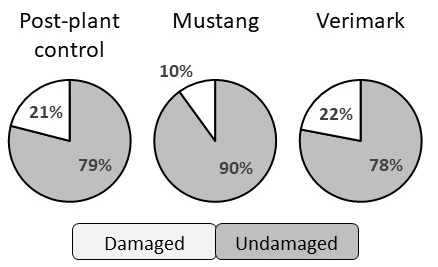
Treatment combinations
Our experimental design allowed us to examine how different combinations of at- and post-plant insecticides faired for control. The best three combinations, in order of efficacy, were Sepresto + Mustang Maxx (5 percent turnips damaged), Chorpyrifos 15G + Mustang Maxx (6 percent damaged) and Chlorpyrifos 15G alone (8 percent damaged), compared to 27 percent damage in plots with no insecticide.
Overall, this showed that combining at- and post-plant treatments might improve control. For example, on average 19 percent of turnips were damaged in plots where only the Sepresto seed treatment was used (Fig. 7). Similarly, plots that were only treated with two applications of Mustang Maxx, but nothing at planting time, saw an average of 19 percent damage. However, only 5 percent of turnips were damaged in plots with Sepresto plus follow-up applications of Mustang Maxx.
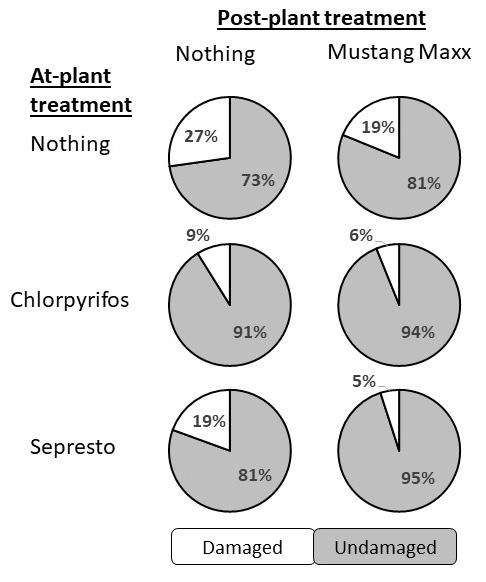
Why did this happen? Seed treatments like Sepresto are typically expected to provide a few weeks of protection. This could make follow up applications later in the activity window of this pest helpful. At the same time, only making post-plant applications may miss early damage by this pest. Combining at- and post-plant applications to bracket the activity window of cabbage maggot may be necessary if the industry transitions to newer-generation products that do not have the soil residual of chlorpyrifos.
A closing note – why is cabbage maggot so hard to control with insecticide?
Good product placement is likely critical with this pest. Eggs are laid in soil crevices in a small zone around the base of plants and hatch in three to five days. This means there is a small area around the base of plants where product needs to be concentrated at a specific time. If product has worn off when maggots hatch, is applied after they hatch or is not concentrated in the zone around the base of plants, it may not be effective.
In this season of Thanksgiving, we want to give special thanks to our grower collaborator, whose patience and helpfulness will hopefully lead to less maggot problems in the future!
– Benjamin Werling, Zsofia Szendrei and Alan Taylor, MSU
This work was funded by Project GREEEN.
















